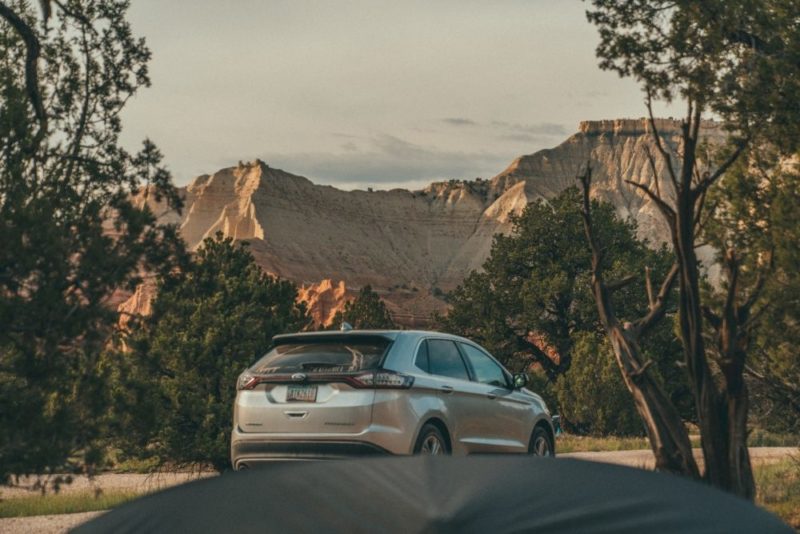In today’s fast-paced world, owning a car is more than just a convenience—it’s often a necessity. However, as time passes and technology advances, holding onto your old vehicle may not always be the wisest choice. While parting ways with a faithful companion can be emotionally challenging, there are several compelling reasons to consider upgrading your ride. In this comprehensive guide, we’ll explore three key reasons why it might be time to bid farewell to your trusted four-wheeler and embrace the benefits of a newer model.
1. Escalating Repair and Maintenance Costs
One of the most significant factors that should prompt you to consider replacing your old car is the increasing frequency and cost of repairs and maintenance.
The Financial Burden of Aging Vehicles
As cars age, they inevitably become more prone to mechanical issues and breakdowns. What starts as occasional minor repairs can quickly escalate into a constant stream of garage visits and hefty bills. According to recent data from AAA, the average cost of owning and operating a new vehicle has risen to $9,666 per year, or $805.50 per month. For older vehicles, these costs can be even higher due to increased maintenance needs.
Breaking down the costs:
- In 2023, drivers spent an average of 9.83 cents per mile on maintenance, repairs, and tire replacement.
- Major components like transmissions or engines may start to fail in older cars, leading to repairs that can cost thousands of dollars.
- As vehicles age, replacement parts become scarcer and more expensive, further driving up repair costs.
The Hidden Costs of Frequent Repairs
Beyond the direct financial impact, frequent repairs also come with hidden costs that are often overlooked:
- Time lost: Every trip to the mechanic means time away from work, family, or leisure activities.
- Stress and inconvenience: Unexpected breakdowns can disrupt your schedule and cause significant stress.
- Decreased reliability: An unreliable vehicle can lead to missed appointments, late arrivals to work, and other costly consequences.
When Repairs Outweigh Value
A crucial point to consider is when the cost of repairs begins to exceed the value of the vehicle itself. Financial experts often recommend the “50% rule”: if a repair costs more than half of your car’s value, it’s time to consider replacement. For example, if your car is worth $4,000 and you’re facing a $2,500 repair bill, it might be more economical to invest that money in a newer, more reliable vehicle.

2. Declining Performance and Fuel Efficiency
As automotive technology continues to advance at a rapid pace, older cars are falling behind in terms of performance and fuel efficiency. This gap not only affects your driving experience but can also have a significant impact on your wallet and the environment.
The Evolution of Engine Technology
Modern vehicles benefit from numerous technological advancements that have dramatically improved both performance and efficiency:
- Direct fuel injection systems provide more precise fuel delivery, enhancing power output and fuel economy.
- Turbocharging allows smaller engines to produce more power while consuming less fuel.
- Advanced transmission technologies, such as continuously variable transmissions (CVTs) and 8+ speed automatics, optimize power delivery and efficiency.
The Impact of Wear and Tear on Efficiency
Even well-maintained older vehicles experience a gradual decline in performance and efficiency due to normal wear and tear:
- Engine components wear down over time, leading to decreased compression and reduced power output.
- Older fuel injection systems may become less precise, resulting in suboptimal fuel mixture and reduced efficiency.
- Transmission wear can lead to slippage and decreased power transfer to the wheels.
Fuel Economy Comparisons
The difference in fuel economy between older and newer vehicles can be substantial:
- A 10-year-old midsize sedan might average around 25 mpg combined.
- A new hybrid midsize sedan can achieve over 50 mpg combined.
- Even non-hybrid new vehicles often see 20-30% improvements in fuel economy compared to their older counterparts.
Environmental Considerations
Upgrading to a newer, more efficient vehicle isn’t just about saving money—it’s also about reducing your environmental impact:
- Newer cars produce fewer emissions due to advanced catalytic converters and engine management systems.
- Many new vehicles offer start-stop technology, which reduces fuel consumption and emissions in city driving.
- The shift towards electrification means that newer vehicles often have hybrid or fully electric options, dramatically reducing or eliminating tailpipe emissions.

3. Outdated Safety Features and Technology
Perhaps the most crucial reason to consider upgrading your old car is the significant advancements in vehicle safety technology over the past decade. Older vehicles simply can’t match the level of protection offered by modern cars equipped with the latest safety features.
The Evolution of Vehicle Safety
Vehicle safety has come a long way in recent years:
- The National Highway Traffic Safety Administration (NHTSA) estimates that vehicle safety developments saved over 600,000 lives between 1960 and 2012.
- Modern vehicles are designed with improved crumple zones and structural integrity to better protect occupants in the event of a collision.
- Advanced high-strength steels and strategic design allow newer cars to better absorb and distribute crash energy.
Critical Safety Features in Modern Vehicles
Many safety features that are now standard or common in new vehicles were either unavailable or extremely rare just a decade ago:
Advanced Driver Assistance Systems (ADAS):
- Automatic Emergency Braking (AEB) can detect potential collisions and apply the brakes if the driver doesn’t respond in time.
- Lane Departure Warning and Lane Keeping Assist help prevent unintentional lane drifting.
- Adaptive Cruise Control maintains a safe following distance from the vehicle ahead.
Improved Airbag Systems:
- Modern cars often have 6 or more airbags, including side and curtain airbags for enhanced protection in side-impact collisions.
- Advanced airbag systems can adjust deployment force based on occupant size and position.
Enhanced Visibility:
- Backup cameras, now mandatory on all new vehicles in the US, significantly reduce the risk of backup accidents.
- Blind spot monitoring systems alert drivers to vehicles in their blind spots.
Structural Improvements:
- Electronic Stability Control (ESC) helps prevent loss of control in emergency maneuvers.
- Improved roof strength standards provide better protection in rollover accidents.
The Impact of Safety Technology
The real-world impact of these safety advancements is significant:
- NHTSA estimates that ESC alone has saved thousands of lives since its introduction.
- Studies have shown that vehicles equipped with AEB experience up to a 50% reduction in rear-end collisions.
- The Insurance Institute for Highway Safety (IIHS) reports that backup cameras reduce backup-related crashes by 17%.
Beyond Safety: Modern Convenience Features
While safety should be the primary concern, newer vehicles also offer a host of convenience and connectivity features that can greatly enhance your driving experience:
- Infotainment systems with smartphone integration (Apple CarPlay, Android Auto) for seamless connectivity.
- Advanced navigation systems with real-time traffic updates.
- Keyless entry and push-button start for added convenience.
- Remote start capabilities, allowing you to pre-condition your vehicle’s interior.
Making the Decision: When to Let Go
Deciding to part ways with your old car is a personal decision that depends on various factors. Here are some key considerations to help you determine if it’s time for an upgrade:
Financial Considerations
- Calculate your current annual spending on repairs and maintenance. If it’s approaching or exceeding the cost of payments on a newer vehicle, it might be time to upgrade.
- Consider the potential fuel savings of a newer, more efficient vehicle. Use online calculators to estimate your savings based on your typical driving habits.
- Factor in the potential insurance savings. Newer vehicles with advanced safety features often qualify for lower insurance premiums.
Safety Priorities
- Assess the safety features in your current vehicle compared to modern standards. If your car lacks essential safety technologies, upgrading could significantly reduce your risk on the road.
- Consider your typical driving conditions. If you frequently drive in challenging weather or on busy highways, the advanced safety features of a newer vehicle could provide invaluable peace of mind.
Lifestyle Changes
- Has your lifestyle changed since you purchased your current vehicle? A growing family, new hobbies, or changes in your commute might necessitate a different type of vehicle.
- Consider your future needs. If you’re planning major life changes in the near future, it might be wise to upgrade to a vehicle that can accommodate those changes.
Environmental Impact
- If reducing your carbon footprint is a priority, consider the environmental benefits of upgrading to a more fuel-efficient or electric vehicle.
- Research the emissions standards of your current vehicle compared to newer models to understand the potential environmental impact of an upgrade.
Conclusion: Embracing Change for a Better Driving Future
While saying goodbye to a trusty old car can be emotionally challenging, the benefits of upgrading to a newer vehicle are often too significant to ignore. From the financial savings of improved fuel efficiency and reduced repair costs to the invaluable peace of mind provided by advanced safety features, newer vehicles offer a host of advantages that can greatly enhance your driving experience and overall quality of life.
As you consider your options, remember that the automotive industry is constantly evolving. The vehicles available today offer unprecedented levels of safety, efficiency, and technology that were unimaginable just a few years ago. By making the decision to upgrade, you’re not just investing in a new car—you’re investing in your safety, your financial well-being, and potentially even the environment.
Take the time to assess your current situation, research your options, and consider the long-term benefits of upgrading. Whether you choose to buy new, lease, or opt for a certified pre-owned vehicle, the advantages of a newer car can far outweigh the temporary discomfort of parting with your old faithful companion.
In the end, the road ahead is full of possibilities. By letting go of your old car and embracing the advancements of modern vehicles, you’re setting yourself up for a safer, more efficient, and more enjoyable driving future. So why wait? Start exploring your options today and take the first step towards a better driving experience.
